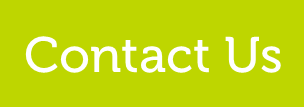Why SaaS companies need to shift to Modular content design

In our last article we discussed the role Competency Based Learning plays in customer success and explained how to put users and business outcomes at the centre of your learning strategies. A pre-requisite for implementing a Competency Based Learning approach is designing and developing modular, agile assets. In this article, we’ll take a closer look at Modular Learning, how it differs from traditional e-learning and how it can drive accelerated adoption, user retention and user satisfaction for SaaS products.
Most SaaS companies deploy some form of training to help accelerate on-boarding and implementation of their products. However, a recent visit to SaaStock (Europe’s biggest conference for Global SaaS companies), revealed that the vast majority of SaaS companies are still creating e-learning content in a traditional fashion: 30-90 minute online sessions or webinars. Knowing a key objective of all SaaS companies is to drive successful customer outcomes as quickly as possible - we think they are missing a trick.
How (and why) Modular Learning is Different
Today’s digital worker have demonstrated very particular preferences in how they consume learning material. 94% of L&D professionals report that their learners prefer short, modular content. E-learning expert Josh Bersin’s infographic reveals much about the realities facing today’s workplace learner. Learners, for example, “won’t watch videos longer than 4 minutes” and “unlock their smartphones up to 9 times every hour”. Alarmingly, learners have just “1% of a typical work week to focus on training and development”. In a related article, Bersin explains that today’s “digital learning” does not simply mean producing videos that are easy to view on your phone, it means “bringing learning to where employees are.” Today’s learners expect responsive content available on multiple devices, or even available for access within your product. This allows them to consume training in increasingly small pockets of time in their day or just when they need it.
Modular Learning has the following core characteristics which address these challenges:
1. Short, agile assets: Modular content is short 2-4 minute videos that are supported by additional material as needed by the user. Learning assets come in different formats, for example short videos, micro-content, simulations or interactive learning experiences. These assets can be mixed together in different ways, according to the user’s profile and preference, to drive a wide range of learning outcomes.
2. Flexible learning paths: Learning paths are developed to optimise the consumption of the modular assets, reflecting the user’s needs and profile, and can be quickly and easily changed and adapted over time as either the product or user profile evolves.
3. Multi-channel Delivery: Modular training meets the learner where they are by offering an ‘anytime, anywhere’ approach. Content is offered in the preferred format, through preferred channels, including option to access through in-app pop-ups.
Push to pull – the benefits of Modular Learning
In traditional learning approaches, generic content is ‘pushed’ to the user in for form of instructor led training, e-learning, and other event-led education. Because modular content is far more relevant, dynamic, and convenient, it increases the chance the learner will ‘pull’ material, empowering them to take control of their own workplace learning.
Adopting modular learning has the following benefits:
• Satisfies End User Learning Preferences: By 2020, nearly 50% of the workforce will be millennials. Modular learning helps cater to a multi-generational workforce by letting learners control the pace of their learning. Users are more likely to engage with and complete modular learning.
• Agile assets can be re-used: Modular Learning assets can be brought together in different orders at different times to provide more personalised user-centric learning. Overall, taking this approach can reduce the time it takes to create learning for complex products (multiple features, usage scenarios) or for diverse end user profiles.
• More easily and quickly updated: Because modular learning assets can be each be updated independently, it is no longer necessary to recreate longer pieces of content from scratch if there is a new product release or additional content or context to be added. More detailed learning experiences can be created over time as end user needs emerge.
SureSkills approach to Modular Learning
SureSkills is a trusted learning partner for many of the world’s leading technology companies and can help you implement Modular Learning as part of a user-centric learning strategy.
Establish Competency Frameworks
We use user-stories to establish the user skills necessary for success within an application or service. We then develop a competency framework that becomes a template for customized content development. We assign levels from beginner through to mastery to each competency established in the framework, and define the tasks a user has to complete to demonstrate each level. This template can be changed over time as new features are added and new user skills are required.
Develop Modular Learning Assets
Once we have identified the initial competency framework, we work with you to build out modular learning assets at the task level. These assets can include video, simulations, e-learning, knowledge checks and assessments based on the competency based framework. If you have existing assets, we can work with you to segment and re-design into modular assets.
Education Lifecycle Management
We work with organisations to implement processes to ensure education content is always up-to-date. Education Lifecycle Management integrates learning asset delivery into the DevOps process to ensure education content is available at the release of every new iteration of the service.
Get in touch to find out more about how we can help you achieve breakthrough adoption and customer success using Modular Learning.
